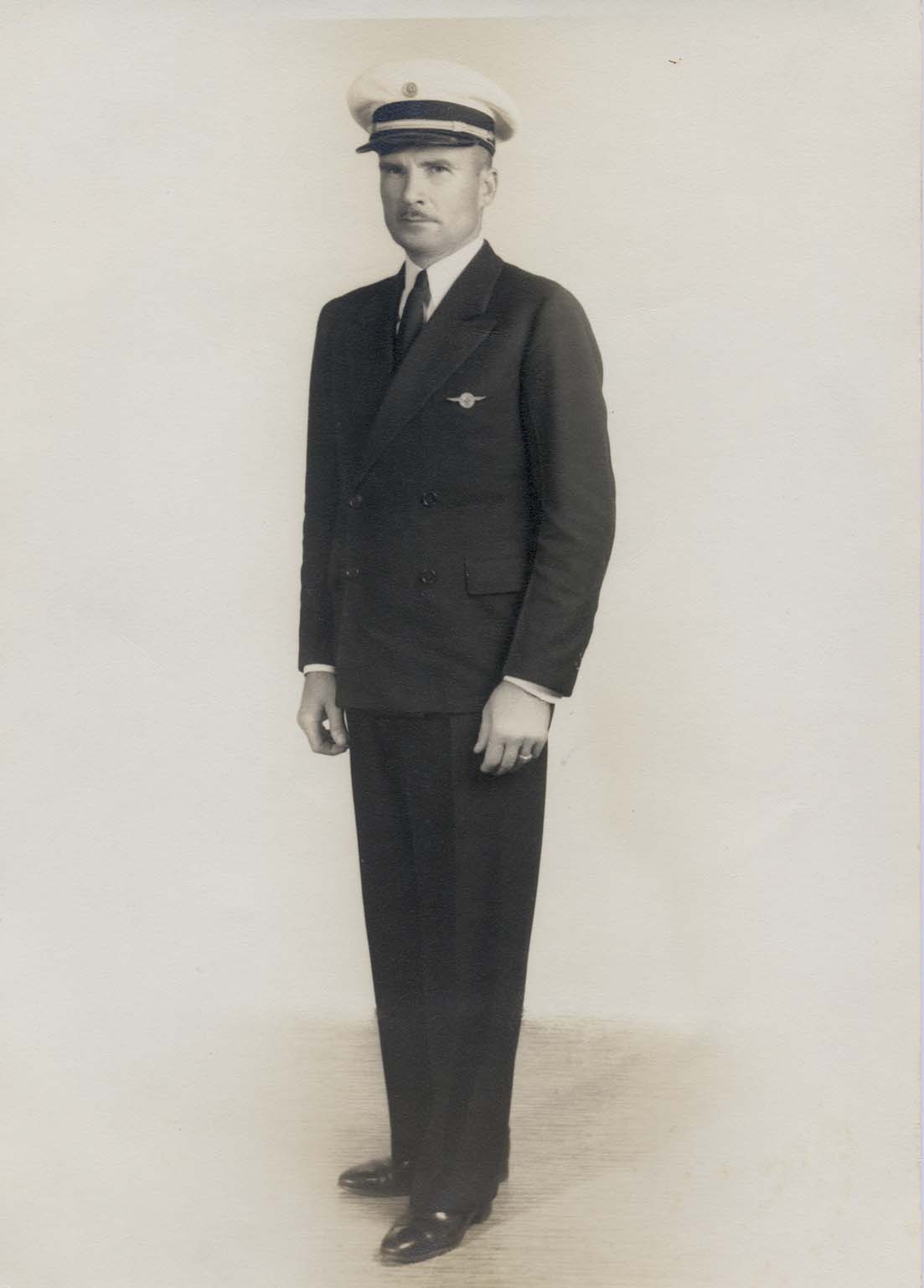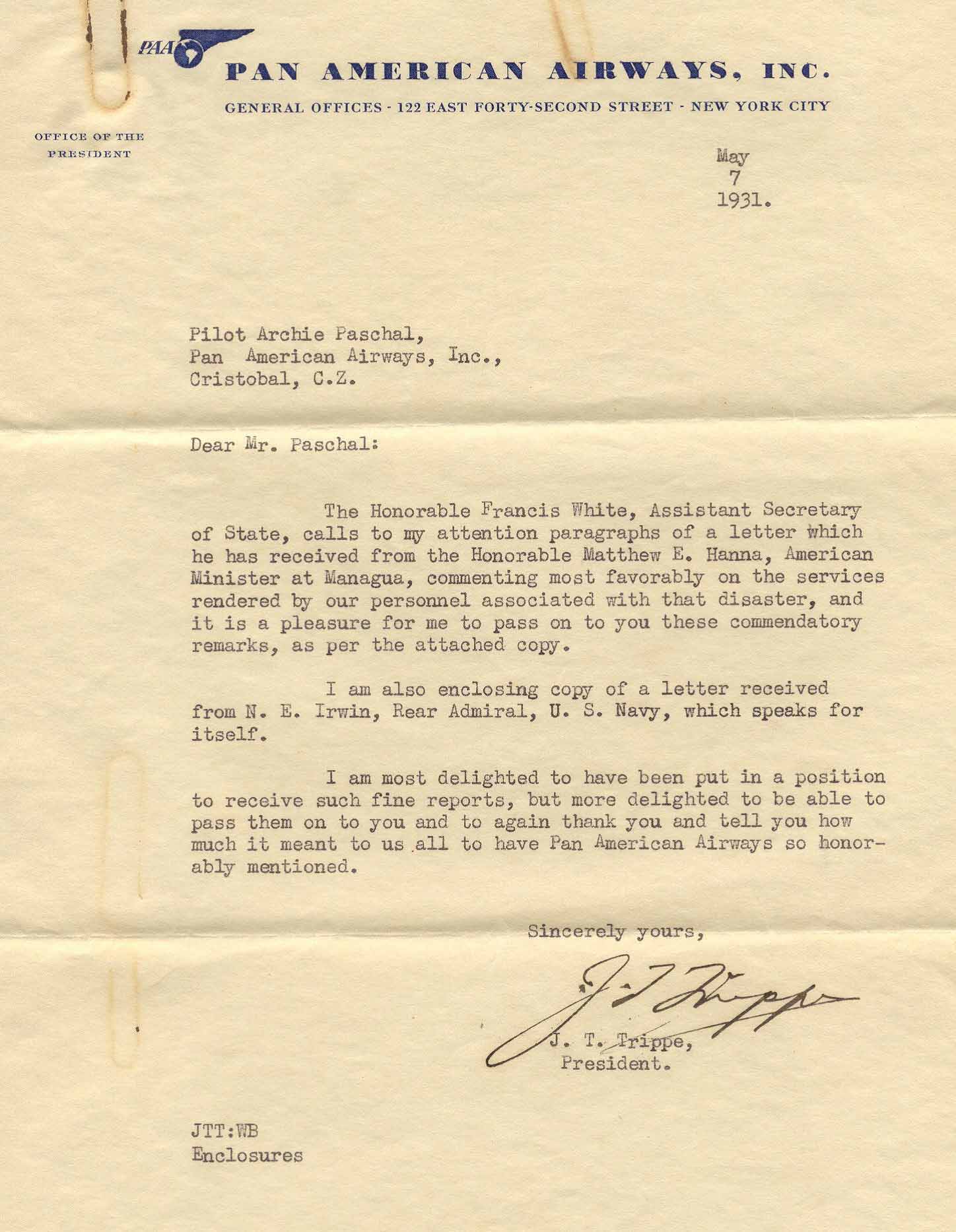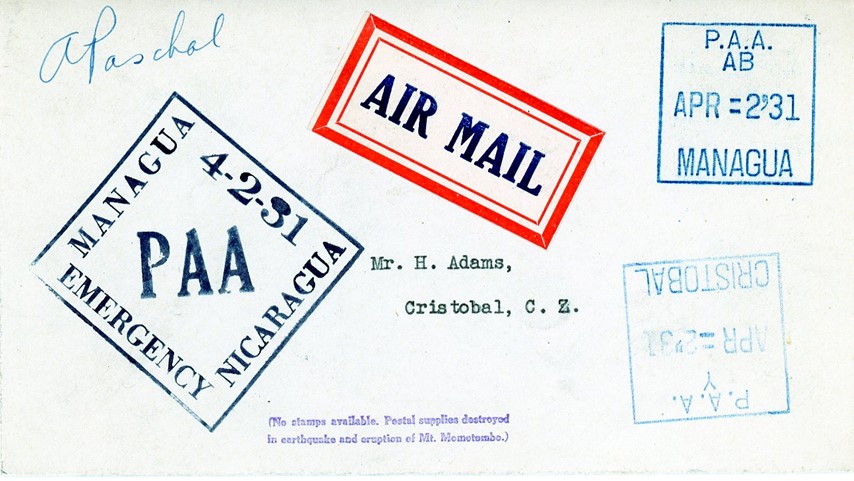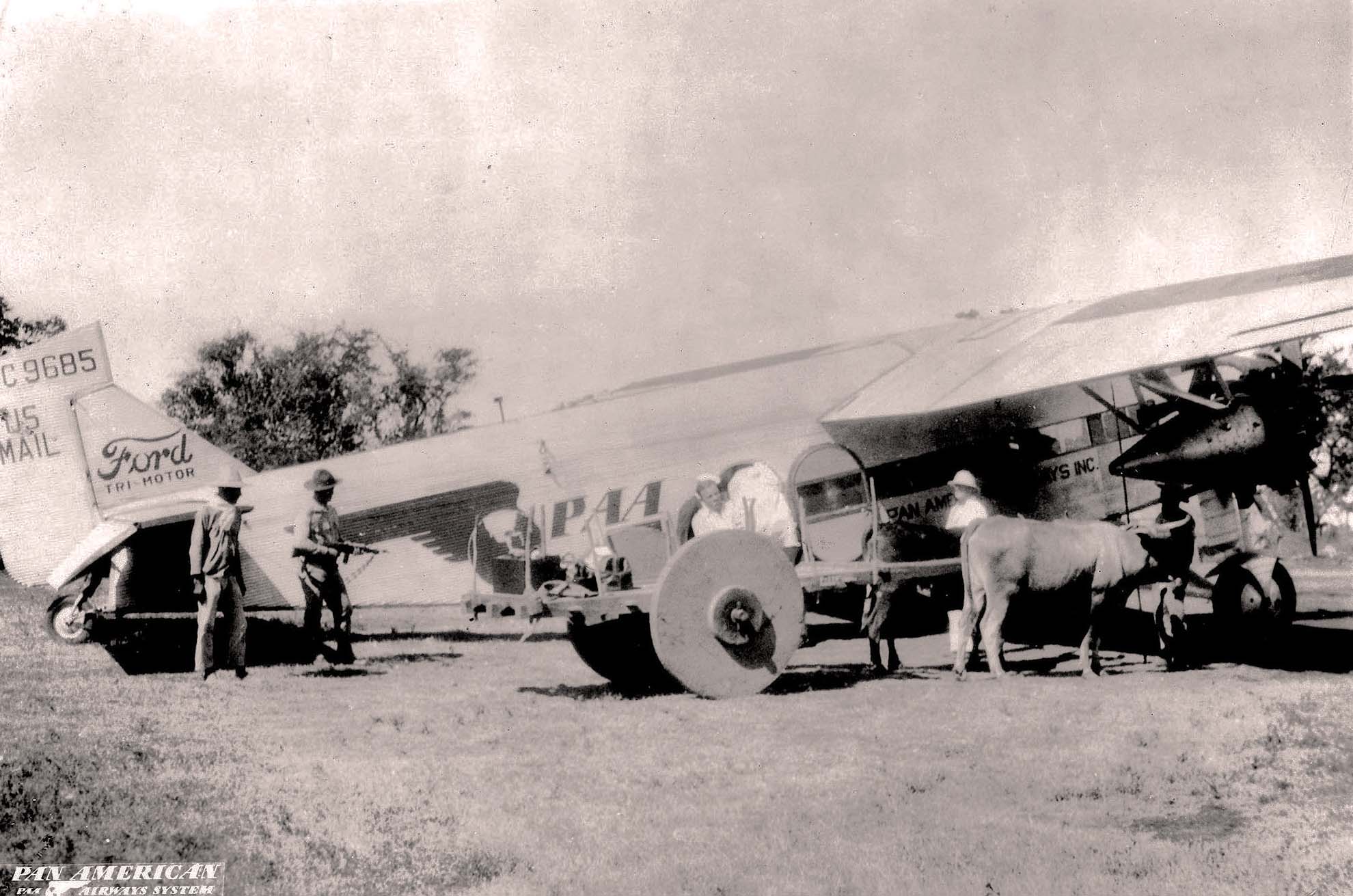Pan Am Historical Foundation is searching for emerging scholars looking to learn and to share the unique story that is Pan Am.
For decades following Pan American Airway's charter in 1927, dozens, then hundreds, then thousands of employees made the company a global success unlike any company before it. Decades after the company's demise, and with declining first-person accounts, keeping the Pan Am story alive falls to a generation of scholars born after 1991.
This article series introduces that next generation's efforts. -- Eric Hobson
My Signature = My Honor:
Captain Archie Paschal’s On-the-Spot Call
By Jack Seufert
Compañia Mexicana de Aviación’s Ford 5-AT (XABCB) approached Managua, Nicaragua Thursday morning, April 2, 1931, under Pan American Airway’s pilot Archie Paschal’s hand. A Central American aviation expert, Paschal had seen the destroyed city 18-hours earlier on his regularly scheduled northbound route. Even so, what he saw as he flew in from San Salvador, El Salvador was worse.
A magnitude 6.1 earthquake triggered by Mt. Momotombo’s March 31 eruption shattered Managua’s core; then fires extended the devastation. Pan Am activated all reserve aircraft and sent pilots with emergency supplies from Miami, Mexico, and the Canal Zone, including Archie Paschal. By the time he arrived 400 were dead and 1000 injured; the death toll exceeded 2000 (1).
Pan Am Ford AT-5 (NC9685) unloading a mail run in Managua (Pan Am Historical Foundation Collection).
Archie’s radio report to Pan Am’s bases in Brownsville, Texas and Miami, Florida was blunt:
“It is a terrible sight. The city is completely demolished and fires are raging. The destruction is beyond description. There is no water and people are walking around in a daze. Bodies are being burned for lack of burial facilities.”
Stationed for years in Nicaragua as a U.S. Marine aviator (amidst U.S. interventionist activity), Archie Paschal was the right man for this crisis. Paschal was fluent in Spanish and the land and politics from El Salvador to Panama, and area military and civilian leaders respected him…even Nicaragua’s revolutionary opposition who labeled him the “man who couldn’t be shot down.”
As Archie inspected dozens of envelopes that needed to exit Nicaragua post-haste, he saw that they lacked required postage stamps because the Post Office had burned.
A career U.S. Marine Corps non-commissioned officer, Archie understood the need to act on his authority to resolve this problem. On each envelope’s upper-left corner, above the Pan Am cachet “Managua Nicaragua Emergency,” Captain Paschal penned “A. Paschal.” His good name served as postage when the mail headed south to Cristobal, Panama.

Pan Am's Archie Paschal (Paschal Family Archive).
Between Thursday the 2nd and Saturday the 4th, Archie made thirteen relief trips, bringing medicine, food, doctors, nurses, and supplies in and flying news reports and refugees out. The crew ate and napped as the Ford was fueled, loaded or unloaded. Over three days, he and his crew spent 20 hours in the air between Managua and San Salvador and in and out of the U.S. Marine compound in Corinto on Nicaragua’s northwest Pacific coast, before leaving for Panama Saturday afternoon. Captain Paschal returned to routine flying four days later, Wednesday April 8th pointing Ford 5-AT Tri-motor (NC9664) north-northwest along Pan Am’s Cristobal to San Salvador route, an eleven-hour day.
One month later, another letter commanded Archie’s attention, this one from Pan American Airways System’s president, Juan T. Trippe.

Pan Am President Juan Trippe's Letter to Paschal, May 7, 1931 (Paschal Family Archive).
Matthew Hanna, the American Minister in Managua, had notified Trippe of his pilots’ exceptional service in relief of Nicaragua and President Trippe took time to thank Archie. In a letter dated May 7, 1931, Trippe explained what it meant to him and the company to have “Pan American Airways so honorably mentioned.”
Of the 25-30 envelopes that Archie Paschal signed amidst post-quake chaos in Nicaragua Thursday, April 2, 1931, one found its way to England where Archie’s grandson stumbled upon it at auction. James “Jim” Paschal bought the letter for $245 and brought his grandfather’s legacy home.

"No Stamp Available" - The signed letter purchased by Archie’s grandson, Jim (Paschal Family Archive).
Footnote:
(1) U.S. Marine, Col. Frederick Bradman estimated the total at 2000, but other estimates were as high as 5000.
Sources:
A. Paschal Flight Log, Paschal Family Collection.
Madera Tribune, April 2, 1931.
Pan American Air Ways, Vol. 2, No. 4, May 1, 1931.
Sydney Morning Herald, April 4, 1931.
Toronto Star, April 1, 1931.

